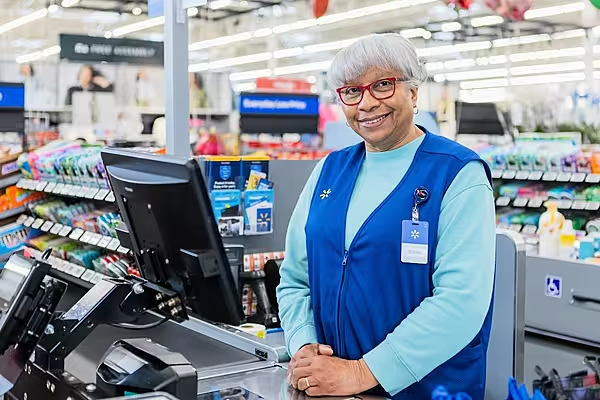Amidst rising currency volatility, Jason Gaywood, head of corporate solutions at FX-as-a-service provider MillTechFX, discusses the importance of FX risk management for food and drinks companies, and the steps they can take to protect their bottom lines against the threat of currency movements.
Food and drinks companies have had to navigate an increasingly challenging landscape over the past 18 months. The combination of inflationary pressures and rising energy prices has hit the industry particularly hard, with food and drinks companies more likely than any other sector to cut trading by at least two days per week to tackle soaring costs.
Amongst the growing challenges they face is the threat of currency volatility. Despite this, many have traditionally seen foreign exchange (FX) as second order; they transact in FX not because they ‘want to’, but because they ‘have to’, given their international exposure.
However, with currency volatility looking set to stay, now is the time to assess the FX challenges that food and drinks companies face, and how they can implement effective risk management strategies against these threats.
Navigating The Challenges
There are several challenges on the FX front, which include:
International Supply Chains
Firms with a global footprint can be particularly exposed to movements in exchange rates due to their international coverage.
In 2020, the UK imported 46% of the total food that it consumed. Any depreciations on home currencies makes imports more expensive, so when the pound fell to a 37-year low last September, for example, it became far more costly for them to import from abroad.
Long Invoice Processing Periods
Goods are often ordered well in advance, to take into account future demand, but these long lead times provide a window for exchange rates to fluctuate, especially in the current volatile climate.
This means that if a food and drinks company is invoiced by a supplier six months after the order was made, they may end up paying far more than they originally intended to if exchange rates change in that time.
Climate and Weather
The supply chains in which these firms operate can be heavily impacted due to climate-induced disruption. For example, between 2020 and 2021, extreme heat in Brazil raised the price of coffee by 70%.
With outbursts of extreme weather likely to continue, food and drinks companies may have to grapple with climate-induced price surges more often.
Demand Uncertainty
Increased living costs means that consumers may tend to cut back on luxury food and drinks items and eating out.
This means that food and drinks companies may place large orders during times of high demand, but if currencies fluctuate significantly between the order being placed and being invoiced, then they may again pay more than they originally intended to.
A More Strategic Approach
Whilst FX management cannot change the external environment, there are several steps that food and drinks companies can take to help reduce the associated costs and minimise volatility risk. These include:
Use of Transaction Cost Analysis (TCA)
TCA was specifically created to highlight hidden costs and enables firms to understand how much they are being charged for the execution of their FX transactions.
Ongoing, quarterly TCA from an independent TCA provider can be embedded as a new operational practice to ensure consistent FX execution performance.
Compare The Market
Many food and drinks firms may be hampered by their inability to access Tier 1 FX liquidity, meaning they often rely on a single bank or broker to meet their hedging requirements, which can be a barrier to best execution.
Having the ability to put trades up for competition is central to ensuring access to the best price, which is key to effective risk management.
Outsourcing
When using the right partner, outsourcing can improve transparency and execution quality.
This can enable food and drinks firms to dedicate more time to core business matters, which is all the more important given that supply chain disruption is expected to persist over the next twelve months.
Strong Governance
The food and drinks supply chain process can be logistically complex, from the farmers who grow the raw ingredients, to packing, delivery, purchasing and selling to consumers.
Harnessing solutions that can strengthen governance may help many of these firms improve the cost, quality and transparency of their FX execution.
Diversification Of Liquidity Providers
One of the big lessons from recent banking failures is the importance of having access to multiple counterparties. Many CFOs have taken this lesson onboard and are now making changes for the better, with one in four (28%) planning to diversify their deposits across more banks.
This means if one counterparty becomes unavailable, a food and drinks company can continue to manage and execute FX trades.
Automation
Despite the rising threat of currency movements, many food and drinks firms may still lack the necessary tools to mitigate the impact of FX volatility and continue to rely on manual processes like phone and email to execute FX trades. Automated solutions can offer end to end workflow, greater transparency and faster onboarding, helping finance departments streamline their FX functions.
With currency movements set to remain volatile over the next year, we believe FX risk must no longer be considered second-order.
Harnessing technology-driven tools and getting the right processes in place will help enable many food and drinks companies to navigate mounting FX challenges and protect their bottom lines.
© 2023 European Supermarket Magazine – your source for the latest Retail news. Article by Jason Gaywood. Click subscribe to sign up to ESM: European Supermarket Magazine.














